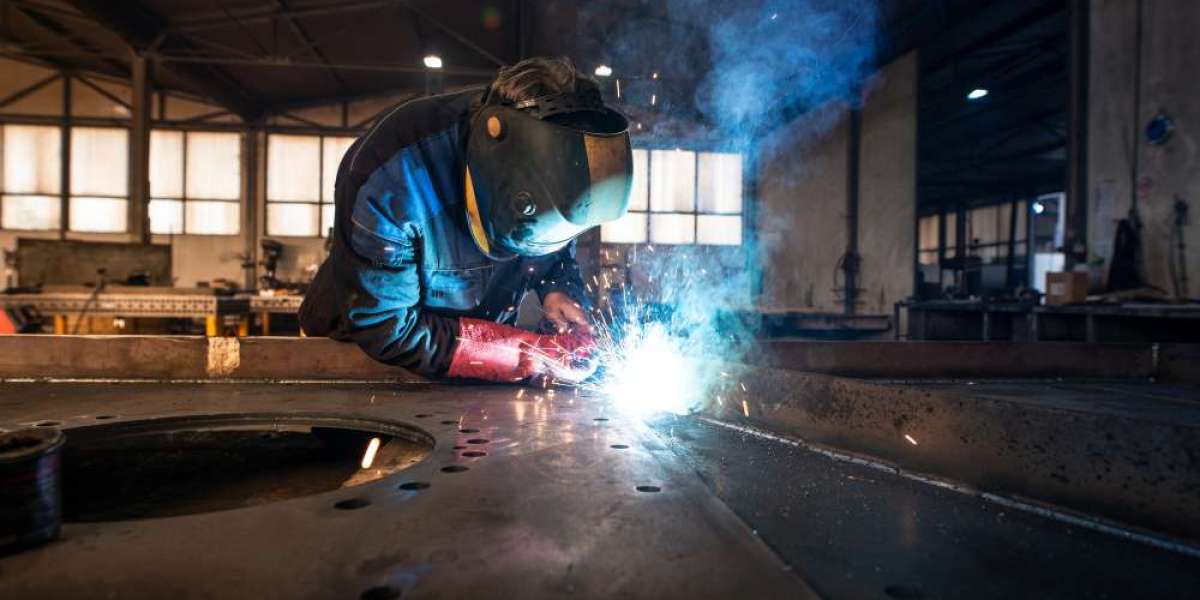Welding is a fundamental process used across numerous industries, from construction and automotive to manufacturing and aerospace. It involves fusing materials, typically metals or thermoplastics, using high heat to create a strong bond. To carry out this process safely and efficiently, the right welding equipment is crucial.
In this blog, we’ll dive into the various types of welding equipment, their uses, and why they are essential for both professionals and hobbyists.
What is Welding?
Welding is a fabrication process that joins materials, usually metals or thermoplastics, by using heat to melt the parts together, often with a filler material. The molten material cools and solidifies, forming a strong joint. Welding is commonly used in industries like construction, shipbuilding, automotive repair, and manufacturing to create or repair metal structures, machinery, or other components.
Types of Welding Equipment
To perform a successful weld, several tools and machines are involved. These range from machines that generate heat to safety gear that protects the welder during the process.
1. Welding Machines
The welding machine is the heart of the operation. It provides the heat necessary to melt and fuse the materials being welded. There are different types of welding machines designed for specific processes.
MIG Welders (Metal Inert Gas):
MIG welders are commonly used in both professional and hobbyist settings due to their ease of use and versatility. This equipment uses a continuous wire feed as an electrode, and an inert gas, usually argon or helium, shields the weld from contaminants in the air. MIG welding is ideal for thin materials, such as sheet metal, and is widely used in automotive repair, fabrication, and construction.TIG Welders (Tungsten Inert Gas):
TIG welding offers precise and high-quality welds. The welder uses a non-consumable tungsten electrode to produce the weld, with a filler rod sometimes added. An inert gas, usually argon, protects the weld from contamination. TIG welders are often used for welding thin materials, stainless steel, aluminum, and other metals that require fine, clean welds.Stick Welders (Shielded Metal Arc Welding - SMAW):
Stick welders are one of the most common types of welding machines. They use a consumable electrode coated in flux, which protects the weld from oxidation and contamination. Stick welding is particularly useful for heavy-duty jobs, outdoor work, or working with thicker materials. It's commonly used in construction, pipe welding, and repair work.Flux-Cored Arc Welders:
These are similar to MIG welders but use a special flux-cored wire that eliminates the need for external shielding gas. They are especially useful for welding thicker metals and are often used in outdoor settings or on construction sites where gas shielding might be impractical due to wind.
2. Welding Torches and Guns
Welding torches and guns are tools that direct the welding heat and feed the welding material (such as a filler rod or wire) to the workpiece. The type of torch used depends on the welding process:
MIG Welding Gun:
In MIG welding, a MIG gun feeds the continuous wire electrode into the weld pool while simultaneously providing shielding gas to protect the weld. MIG guns come in various sizes for different applications, such as light or heavy-duty welding.TIG Torch:
The TIG torch holds the tungsten electrode and is used to direct the heat. TIG torches have a water or air-cooled system to maintain the temperature and keep the torch from overheating.Stick Welding Electrode Holder:
In stick welding, the electrode holder holds the consumable electrode, which is used to generate heat for the welding process. These holders are designed for comfort and to provide a secure connection during welding.
3. Welding Rods and Wire
The welding rod or wire is the filler material used in welding to join metal pieces. The choice of rod or wire depends on the type of material being welded and the welding process being used.
MIG Wire:
MIG wire is a continuous wire feed used in MIG welding to create the weld pool. It is available in various materials, such as steel, stainless steel, and aluminum, depending on the metals being welded.TIG Filler Rods:
In TIG welding, the filler rods are fed manually into the weld pool to add material and ensure a strong joint. The rods are typically made of materials that match the workpiece.Stick Electrodes:
Stick electrodes are coated with flux and used in stick welding to generate the heat required to melt the base metal. The flux helps protect the weld area and prevents oxidation.
4. Protective Gear
Welding can be dangerous due to the high temperatures, flying sparks, and intense light produced during the welding process. Proper safety gear is essential to protect the welder from burns, eye damage, and other hazards.
Welding Helmet:
A welding helmet with a darkened visor is essential to protect the welder’s eyes from the intense ultraviolet (UV) and infrared (IR) light produced during welding. Modern helmets come with auto-darkening features that adjust the lens based on the brightness of the arc.Welding Gloves:
Welding gloves are made from durable, heat-resistant materials like leather to protect the hands from burns and electrical hazards. They also provide flexibility and grip for better control.Protective Clothing:
Welders should wear flame-resistant clothing, such as jackets or aprons, to protect themselves from sparks and heat. Leathers or specially designed fireproof fabrics offer the necessary protection.Welding Boots:
Heavy-duty, flame-resistant boots are essential to protect the welder’s feet from falling objects and molten metal splashes.
5. Welding Accessories
In addition to the primary equipment, several welding accessories can make the process smoother and more efficient:
Clamps and Fixtures:
Clamps are used to hold the workpieces together securely during welding, ensuring precise joints and preventing movement that could lead to inaccuracies.Welding Magnets:
These are used to hold metal parts in place while welding, ensuring accurate angles and alignment.Angle Grinder:
After welding, an angle grinder is often used to smooth out the welds, remove slag, and finish the surface for a professional result.Welding Wire Feeders:
For MIG and flux-cored arc welding, wire feeders automatically feed the welding wire to ensure a consistent and efficient process.
Why Is Welding Equipment Important?
Welding equipment plays a vital role in ensuring the success and safety of any welding job. Here are some reasons why having the right welding tools is essential:
Precision and Quality:
The right equipment ensures high-quality, precise welds. Poor-quality equipment can result in weak joints, which can lead to structural failures.Efficiency:
Proper tools make the welding process faster and more efficient, saving time and reducing the risk of mistakes.Safety:
Welding involves intense heat, sparks, and bright lights. Having the proper safety gear and equipment reduces the risk of injuries and ensures a safer working environment.Cost-Effectiveness:
Investing in high-quality welding equipment can reduce long-term costs by improving the consistency and durability of the welds, reducing material waste, and minimizing the need for rework.
Conclusion
Welding equipment is essential for anyone working with metal. Whether you’re a professional welder or a DIY enthusiast, having the right tools ensures high-quality work and safety. From welding machines to safety gear, each piece of equipment plays a vital role in creating precise and strong joints.
Understanding the different types of welding equipment and how they work is key to choosing the right tools for any welding project. With the right tools, you can create durable, high-quality welds that will stand the test of time.



